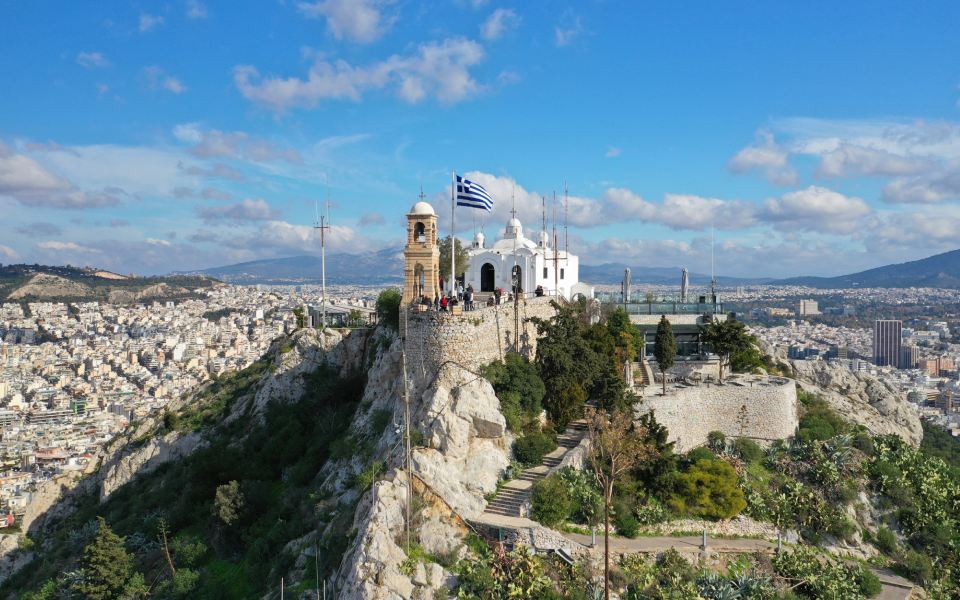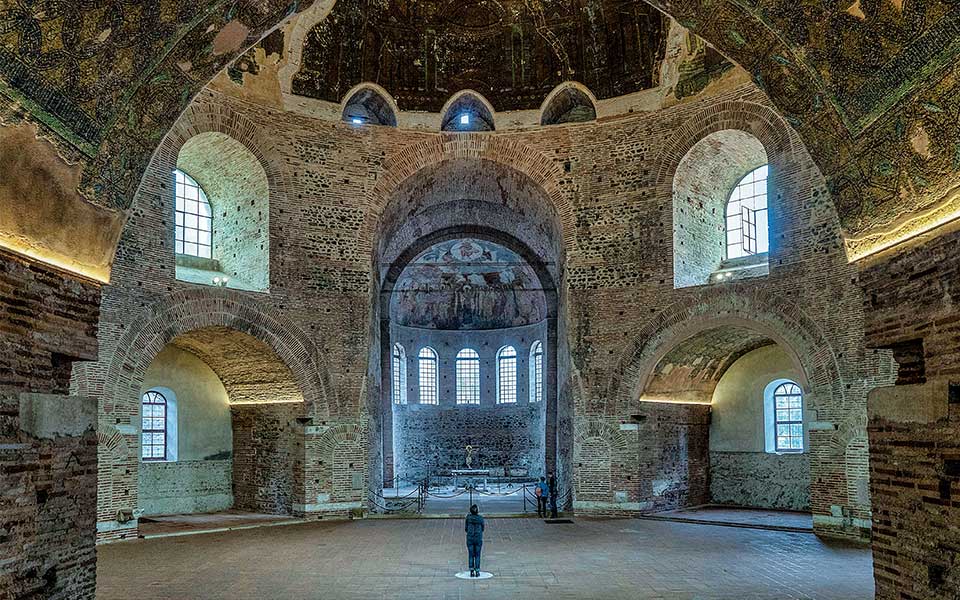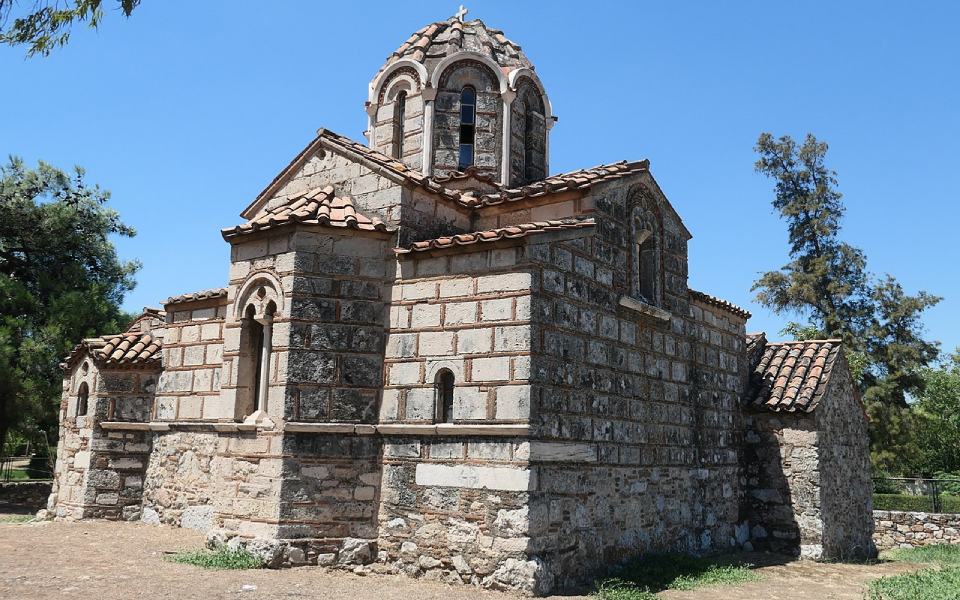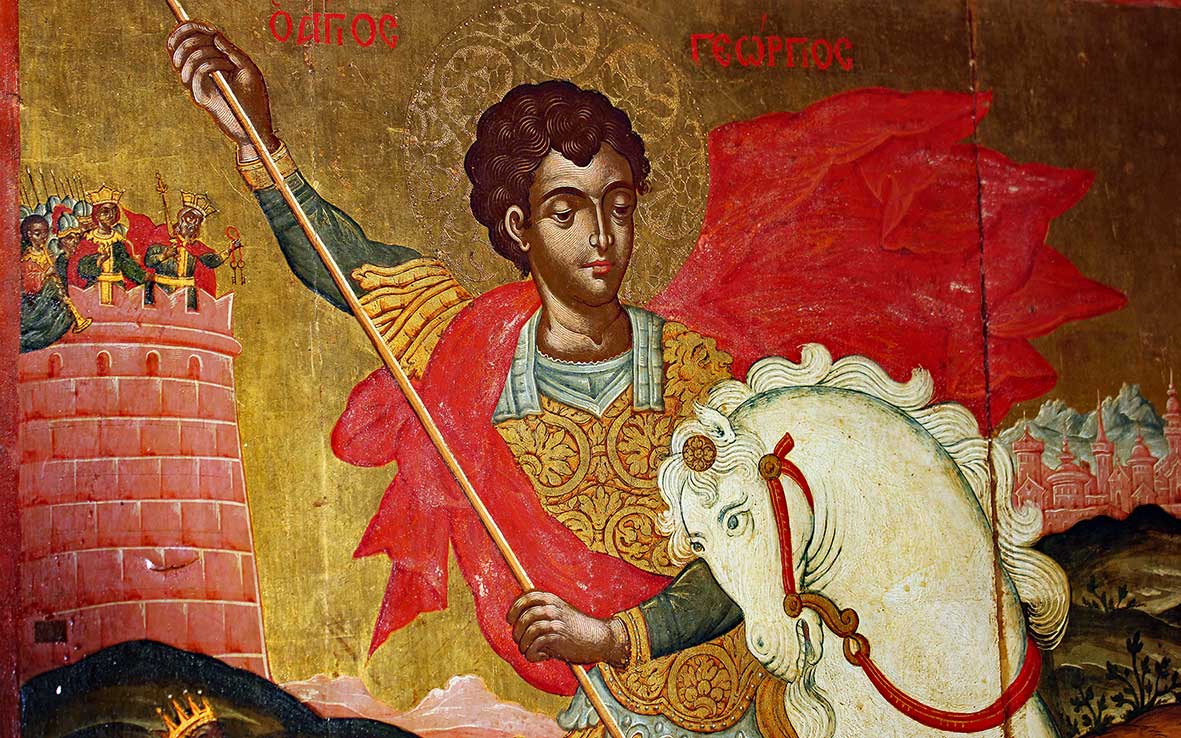St George the dragon-slayer, the trophy bearer, protector of the armed forces, liberator of prisoners and defender of the poor, healer of the sick, Christ’s soldier. These are just some of the epithets and appellations of this most beloved of Christian saints, the Great Martyr whose name is the most popular among Greek males.
Born around 280 AD in Cappadocia to a wealthy family, he converted to Christianity early in life and was baptized in a local monastery. His father, Gerontius, was an officer in the Roman army who died relatively young, forcing his mother, Polychronia, who was also a Christian, to move the rest of the family to her birthplace of Lydda in Palestine. George joined the Roman army and quickly moved up the ranks, thanks to his bravery and military prowess.
When emperor Diocletian’s persecution of the Christians started, he refused to renounce his faith. Having risen to the rank of tribune of the imperial guard and eventually prefect, George was offered higher office and significant financial inducements to return to worshipping the 12 Roman gods, but he insisted on his Christian faith. He was tortured for several days, with his persecutors devising new and terrible punishments, but he miraculously survived, as is recorded in Christian tradition.

© Shutterstock
His companions were in turn tortured and executed and are honored as saints, including his mother, Polychronia. Finally, his torturers resorted to decapitating him on the eve of Easter, April 23, 303 AD. Since then, he is honored on April 23, but when the date falls before Easter his feast day is moved to Easter Monday.
St George’s origins and his military background linked him to Byzantium and its military tradition. As early as the 6th century he is depicted in military garb, but on foot. From the 9th century onwards, he begins to be shown on horseback wielding a spear. The image of St George on horseback slaying evil – in its broadest sense – have dominated the iconography from the 11th-12th centuries until the present day.
Christian tradition attributes to him the slaying of a snake-like monster, in the Eastern tradition, or a many-headed monster with allusions to St John’s Revelation, in the Western tradition. According to this tradition, a dragon guarded a spring in the city of Silene in Libya, and demanded the sacrifice of two live animals to allow local people to access the water. The locals initially offered him two sheep, but when the animals began to run out they offered two people instead, selected by lot.

© Perikles Merakos
However, when the king’s daughter was selected, he resisted, provoking an insurrection among his subjects. He was eventually forced to give in, but as the princess walked towards the dragon resigned to her fate, St George appeared on horseback. After slaying the dragon – a clear reference to evil – the people of the city were so amazed at what they had witnessed they converted to Christianity.
St George, appearing in military dress and with a military background, set the precedent for a series of military saints, including St Demetrius, the two St Theodores, also dragon-slayers.
It is no accident that St George became the patron saint of the Crusades and several knightly orders, as well as countries and regions with strong military traditions, among them England, Moscow, Catalonia, Aragon, Constantinople, Greece, Bavaria, Bulgaria, Cyprus, and Serbia. In Italy alone, more than 100 towns have St George as their patron saint, and there is a similar tradition in Greece.
St George is also the patron saint of the Greek army and the Greek scouts.

The traditions and customs associated with St George are rich, particularly those originating in Asia Minor, while the churches dedicated to him are numerous.
One underrated architectural gem is St George’s church in the Athenian neighborhood of Galatsi, which is located in Veikou park. It is a unique 12th-century building with beautiful frescoes created by an unnamed artist, including a superb image of the Pantocrator decorating the central dome. Thanks to its beautiful adornments, the church is known as Omorfokklisia, or Evmorfi Ekklisia, meaning “beautiful church.” Services only take place on the eve and the day of the saint’s feast.
Equally beautiful – and not coincidentally known by the same name of Omorfokklisia – is the church of St George in the eponymous village 21 km outside the town of Kastoria in northern Greece. In addition to its superb frescoes, the church is famous for its 3 meter-tall wooden statue of the saint.
A further addition to the list is the chapel of St George on Lycabettus, which has served as a landmark overlooking Athens since the 17th century. Three major monasteries on Athos are also dedicated to the saint.
Finally, he is also honored at the iconic Rotonda in Thessaloniki, famous for its beautiful mosaics.











